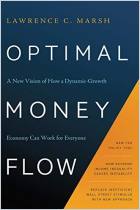加入 getAbstract 阅读摘要

加入 getAbstract 阅读摘要
Paul Sheard
The Power of Money
How Governments and Banks Create Money and Help Us All Prosper
Matt Holt Books, 2023
看看什么内容?
When it comes to the power of money, facts can be as potent and surprising as fiction.
Recommendation
The last few financial crises – and now the battle against inflation – have shown how questions about money and government’s control of it can be important and contentious. Economist Paul Sheard explains how the seemingly outlandish claims of Modern Monetary Theory are true to a degree, while at the same time showing how governments refrain from abusing their extraordinary power over fiat money creation. Along with Sheard’s practical reflections on inequality and taxes, the euro, cryptocurrencies and financial crises, this book contains most of what you need to know about “the power of money” today.
Summary
About the Author
Paul Sheard is the former vice chairman of S&P Global and a former senior fellow at the Harvard Kennedy School.


















Comment on this summary